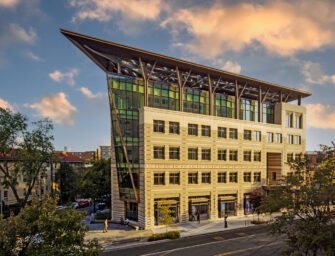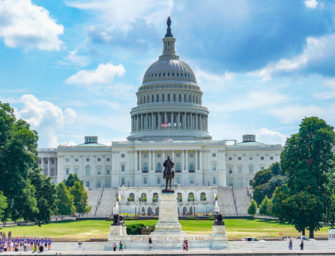2018 Fall Meeting: What Science Stands For
By Lauren Parr, Vice President, Meetings
Paying tribute to the achievements of the past is a critical part of understanding the possibilities of the future, and there is certainly no better place to do that than at AGU’s Fall Meeting. The Fall Meeting has long been a place where ideas and concepts that will change the course of science come to light, so it’s particularly appropriate that this year’s meeting will mark the official start of our celebration of AGU’s Centennial.
The 2018 Fall Meeting will recognize another dynamic year of discovery in Earth and space science and the connection to AGU’s Centennial has allowed us to create a wide variety of important and exciting opportunities for you to be a part of using the energy of the past to advance the future of Earth and space science for the benefit of humanity.
Transforming Science
Having just officially opened abstract submissions yesterday, you can imagine how excited we are about this year’s scientific program. In addition to regular programming, we will be featuring Centennial Union sessions that celebrate scientific achievement, discovery, and understanding in Earth and space science. These sessions are a look back at those advances and a glimpse of what the next 100 years will bring. Also, to help you curate your experience at the meeting, we will have a Centennial SWIRL, designed to highlight these themes across the entire program. In addition to traditional sessions, AGU is expanding their use of alternative formats and encourages your submissions in the eLightning, panel, and short talks sessions.
And, of course, we will be welcoming Fall Meeting attendees into AGU’s recently renovated headquarters building for tours. The building is striving to be Washington D.C.’s first net zero energy renovated building, is a model for energy-efficient urban renovation, and exemplifies our values of scientific discovery while illustrating the impact of Earth and space science on society.
Bridging Communities
The Washington, D.C. location for this year’s meeting has opened up a number of new opportunities for attendees to inspire the world to see how Earth and space science benefits humanity in their day-to-day lives. Home to many agencies, NGOs, and other organizations, you will see events ranging from lectures at various embassies to workshops that teach you about science policy and help you develop your own science communication skills, so you can amplify the accomplishments of the last 100 years to build support for the next 100 years of discoveries and solutions. Additionally, many scientific organizations in Washington, D.C. are participating in the meeting by hosting their own public lectures and affiliated activities. We’ll announce details as they become available. Building on the successful field trips that took place in New Orleans, AGU is also expanding these in Washington, D.C. and offering you the opportunity to take part in field trips to explore the local geology, including a multi-day experience in Shenandoah, trips to Great Falls, Calvert Cliffs and other locations of interest.
Inspiring the Future
Washington, D.C. is known for a lot of things, but one of the very best is the outstanding Smithsonian museums. Whether it’s the National Air and Space Museum or the National Museum of African American History and Culture, you can find inspiration of one kind or another in every corner – and this year you will have the opportunity to experience a few of those museums in a new way. AGU will be hosting a “Night at the Museums” for attendees and their families to enjoy after-hours open houses at the National Air and Space Museum, the National Museum of African American History and Culture, the National Museum of Natural History and the National Museum of American History on 13 December. Details will be announced soon.
And, those of you who attended in 2017 will remember that AGU is partnering with StoryCorps as part of our Centennial celebration. Part of that partnership includes a dedicated AGU community on the StoryCorps Archive page, where scientists can upload recordings of themselves telling the story of their first discovery, the moment that inspired them to be a scientist, etc. This year we will have a space in the AGU booth where volunteers will be available to help you use the StoryCorps app to record your own story and upload it to the AGU community, making your voice a part of AGU’s Centennial.
These are just a few of the exciting things we have planned this year, so I encourage you to keep an eye on the Fall Meeting website, as well as Twitter and Facebook, #AGU18/#AGU100, for updates. As you can tell, we are going to be taking every opportunity possible during the 2018 Fall Meeting to show the world What Science Stands For, and I can’t think of a better way to kick off AGU’s Centennial celebration.

![AGU100_logo_V-RGB[272]](https://fromtheprow.agu.org/files/2017/11/AGU100_logo_V-RGB272-1050x1130.png)


There are no comments
Add yours